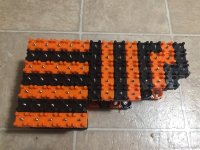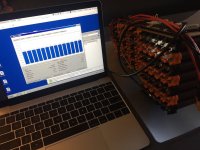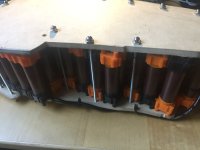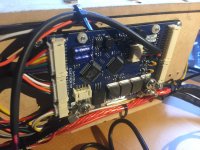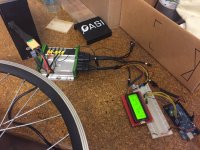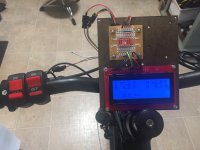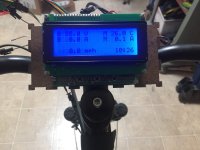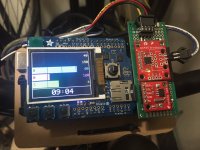drdrs
1 W
- Joined
- Jun 10, 2018
- Messages
- 50
This is a bike that has been under evolution for about 2 years now. It started as a KHS Alite from Luna Cycles with a Hailong pack and a BBS02. Now it has
- Crystalyte 3540 rear hub motor
- ASI BAC 2000 (green and black) controller
- Custom 14s5p HG2 battery with Energus Tiny BMS
- Custom Arduino/TFT display with digital connections to BMS and ASI and datalogging
- Custom wiring harnesses for the controller and handlebars
- Variable regen left hand throttle
A couple of specs and measurements
- Peak observed electrical power 5.59 kW
- Best 0--30 mph GPS app time 5.3 seconds
- Top speed around 40 mph
- 29.3 kilograms
I'll post details in the future about the display and the battery.
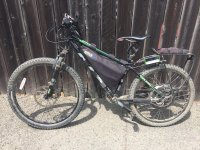
I've crimped a connectors for the throttle and braking inputs to the controller as well as the hall and motor temperature inputs.
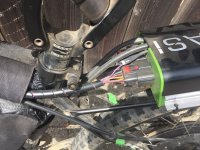
Crystalyte motor and Grin torque arm.
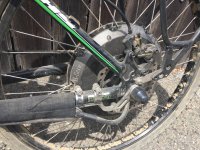
I tried to clean up the handlebars by using the Hirose DF62 connectors for the throttle, regen, and kill switch. The display is still a rats nest since it is under development. Hydraulics will be trimmed soon.
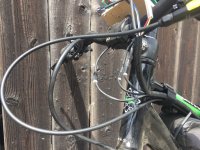
- Crystalyte 3540 rear hub motor
- ASI BAC 2000 (green and black) controller
- Custom 14s5p HG2 battery with Energus Tiny BMS
- Custom Arduino/TFT display with digital connections to BMS and ASI and datalogging
- Custom wiring harnesses for the controller and handlebars
- Variable regen left hand throttle
A couple of specs and measurements
- Peak observed electrical power 5.59 kW
- Best 0--30 mph GPS app time 5.3 seconds
- Top speed around 40 mph
- 29.3 kilograms
I'll post details in the future about the display and the battery.

I've crimped a connectors for the throttle and braking inputs to the controller as well as the hall and motor temperature inputs.

Crystalyte motor and Grin torque arm.

I tried to clean up the handlebars by using the Hirose DF62 connectors for the throttle, regen, and kill switch. The display is still a rats nest since it is under development. Hydraulics will be trimmed soon.



